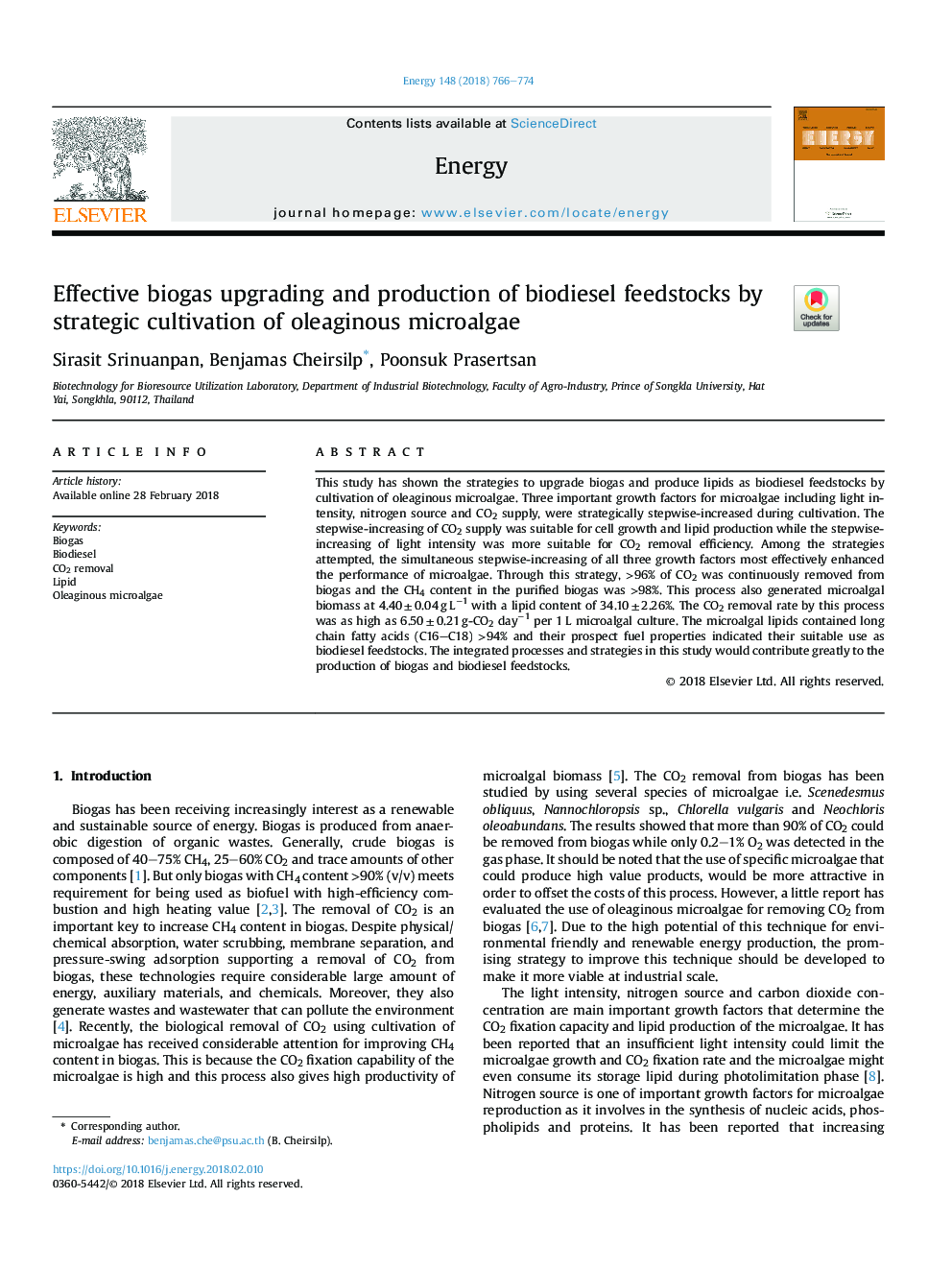| Article ID | Journal | Published Year | Pages | File Type |
|---|---|---|---|---|
| 8072051 | Energy | 2018 | 9 Pages |
Abstract
This study has shown the strategies to upgrade biogas and produce lipids as biodiesel feedstocks by cultivation of oleaginous microalgae. Three important growth factors for microalgae including light intensity, nitrogen source and CO2 supply, were strategically stepwise-increased during cultivation. The stepwise-increasing of CO2 supply was suitable for cell growth and lipid production while the stepwise-increasing of light intensity was more suitable for CO2 removal efficiency. Among the strategies attempted, the simultaneous stepwise-increasing of all three growth factors most effectively enhanced the performance of microalgae. Through this strategy, >96% of CO2 was continuously removed from biogas and the CH4 content in the purified biogas was >98%. This process also generated microalgal biomass at 4.40â¯Â±â¯0.04â¯gâ¯Lâ1 with a lipid content of 34.10â¯Â±â¯2.26%. The CO2 removal rate by this process was as high as 6.50â¯Â±â¯0.21â¯g-CO2 dayâ1 per 1â¯L microalgal culture. The microalgal lipids contained long chain fatty acids (C16C18) >94% and their prospect fuel properties indicated their suitable use as biodiesel feedstocks. The integrated processes and strategies in this study would contribute greatly to the production of biogas and biodiesel feedstocks.
Related Topics
Physical Sciences and Engineering
Energy
Energy (General)
Authors
Sirasit Srinuanpan, Benjamas Cheirsilp, Poonsuk Prasertsan,
